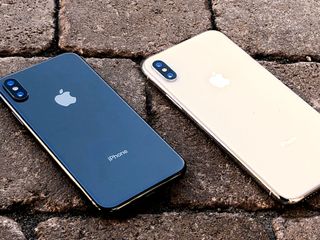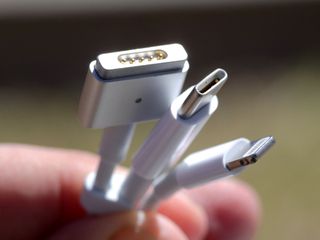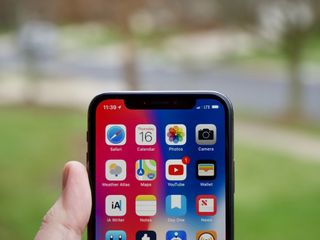iPhone (2018) preview: What they are and why

Rumors about the next-generation, 2018 iPhones kicked off even before Apple announced the now current-generation, 2017 iPhones. Because: of course they did. Now, presumably just weeks away from Apple's annual September iPhone event, the rumors are coming in faster and more furiously than ever. Some of them are all but certain. Others… likely more fiction than fact.
1. Three new iPhones
Way back in July of 2017, Nikkei reported that Apple was planning to go all-in on OLED in 2018.
Apple is planning to use advanced organic light-emitting diode displays in all new iPhone models launched from the second half of 2018, according to two industry sources.One said that Apple is tentatively looking at releasing three new models next year.
Now, this was back before Apple had shipped a single OLED iPhone, namely iPhone X, so Nikkei can be forgiven if that first part doesn't pan out. That second part, though, appears to be spot on.
Of course, Apple went on to release three new iPhone models in 2017 — iPhone 8, iPhone 8 Plus, and iPhone X, so it wasn't exactly a stretch. Back then it was two iterative models for those who loved what iPhone was, including and especially the Home button, but just wanted it faster and with a better camera. The revolutionary model, though, was for those who wanted what iPhone would be next.
In 2018, the new model count remains the same, even if the intent behind it has changed significantly.
2. Two OLED, one LCD

On November 13, 2017, just after iPhone X shipped, everyone's favorite supply-chain exfliltrator, Kuo Ming-Chi chimed in, via MacRumors
Two new OLED models target high-end market; new TFT-LCD model aims at low-end & midrange markets.
Not just any LCD, though. On May 9, 2018, Business Korea said:
Master your iPhone in minutes
iMore offers spot-on advice and guidance from our team of experts, with decades of Apple device experience to lean on. Learn more with iMore!
Apple is expected to load its next 6.1-inch iPhone model with an MLCD+ display which LG used in its G7 ThinQ smartphone. The MLCD+ display realizes a bright screen with less power consumption than the IPS LCD display.
That's 100% of the DCI-P3 color space at 30% less power consumption, so still a significant upgrade.
3. 5.5-inch, 6.5-inch, and 6.1-inch
Kuo pegged the flagship sizes as 5.8-inches, the same as the current iPhone X; 6.5-inches for the Plus-sized model, which would keep the overall footprint about the same size as the current iPhone 8 Plus, and 6.1-inches for the LCD model, which would keep the Plus distinctly plussy, but also appeal to regions where phones are primary computers and size really does matter.
This rumor is notable for a few reasons.
- The two OLED flagships and a less-expensive LCD model, and at those specific sizes, has stayed consistent to this very day.
- Never mind the imbecilic hot takes from Forbes Contributors and the like that Apple was "cancelling the iPhone X", this hinted at a replay of the iPhone 5s strategy from 2013: Rather than keeping the previous, expensive to manufacture, iPhone around and dropping its price by $100 to make it the mid-range, Apple would be creating an all-new mid-range device instead. Then, it was the unabashedly plastic, pop-colored iPhone 5c. Now, it was rumored to be an LCD iPhone with the new design.
- Since Samsung was the only one capable of producing OLED panels to Apple's requirements back then, Samsung could charge a huge, huge premium. Going LCD would let Apple offer something that still looked new but cost much less. To get the chinless iPhone X look — something almost no Android vendor has been willing or able to do — Apple folded the display back onto itself. That was possible with OLED then and appears to be possible with LCD now. If you have Apple's money and will.
KGI’s screen resolution for 6.1-inch is 1792x828. The 6.5-inch is 2688x1242.
So that’s very conveniently 896x414@3x and 896x414@2x — so both phones would show the same amount of content, just at different pixel densities.KGI’s screen resolution for 6.1-inch is 1792x828. The 6.5-inch is 2688x1242.
So that’s very conveniently 896x414@3x and 896x414@2x — so both phones would show the same amount of content, just at different pixel densities.— Benjamin Mayo (@bzamayo) August 28, 2018August 28, 2018
In 2013, Apple shipped a new flagship and a new mid-range iPhone.
In 2014, Apple shipped new big and bigger flagship iPhone.
In 2018, Apple could ship new big and bigger flagship, and a new mid-range iPhone.
It's like all the planning and all the scaling Apple has done over the last few years has led to this.
4. Dual SIM
On November 17, 2018, Kuo talked modems and the possibility for dual SIM cards, via MacRumors
New baseband chips from Intel & Qualcomm will significantly boost transmission speed of new 2H18 iPhone models thanks to supporting 4x4 MIMO antenna design. We believe that 2H18 new iPhones will upgrade baseband chips from Intel's XMM 7480 and Qualcomm's MDM 9655 in 2H17 to Intel's XMM 7560 and Qualcomm's SDX 20.
That 4x4 multi-in, multi-out, would be up from the 2x2 found in current iPhones. Due to ongoing patent disputes and massive pricing demands, Apple would stick to primarily Intel modems, only using Qualcomm where they had to for legacy CDMA compatibility — Verizon and Sprint literally still holding the wireless world back.
Apple is already conservative when it comes to radios. It didn't go 3G until iPhone 3G, and didn't go LTE until iPhone 5. It prefers to wait for later-generation, more power-efficient modems than rush to get the latest, hottest speeds in their first. That's a huge contrast to how Apple views local performance, with industry-leading processors year-after-year. It irks LTE and now 5G nerds, but given how much performance can vary based on position and tower alone, it's not something Apple feels most customers really care about at the micro level.
Dual SIM is different. That will hold wide appeal for people in parts of the world, including and especially Asian markets, where the need to switch between carriers can be a daily reality. Kuo got more specific about the dual slots on April 24, 2018, via MacRumors specifying they would only be available on the 6.8-inch iPhone 10 Plus, and 6.1-inch iPhone LCD minus, likely for size reasons. But also, pricing on the latter:
if the [Dual SIM] model sells for US$650-750, the single-SIM model may sell for US$550-650
5. L-shaped batteries
On December 8, 2017, Kuo was back, back again, but this time with battery rumors, via AppleInsider:
If Apple and LGC work out manufacturing hurdles in time for mass production, the next-generation 5.8-inch OLED iPhone will be powered by a 2,900- to 3,000-mAh battery, Kuo says. A larger 6.5-inch OLED model is anticipated to employ a two-cell design with a capacity between 3,300 and 3,400 mAh.
I've said this before and I'll say it again: Measuring battery life on an iPhone based on checking email and surfing news sites on the web was fine in 2008 when that's legitimately what most people did. It's not fine in 2018 when more and more people are catching Pokémon and surfing Instagram. Then it was just the radio and the renderer firing up. Now it's constant GPS, shaders, and mixed media as well.
Since making iPhones heavier is terrible for usability, and there's not much new chemistry to make batteries better, Apple has to continue making them more clever. A lot of that is in the software and controllers, but geometry helps too. For MacBook, Apple went with terraces to squeeze in as many square millimeters as it could.
If a two-cell L configuration could help the new OLED flagships up their power game, and further differentiate them from the LCD, so much the better.
6. USB-C charger

On May 28, 2018, Weibo, essentially the Chinese Twitter, leaked a18w USB-C charging brick for the next-generation iPhones.
Yes, low and slow charging over the traditional if miserly iPhone brick might be the best way to micro-manage and prolong every minute of battery-health possible from your iPhone. But, people use their iPhones os often, and Apple has gotten so good at mitigating the issues with faster, hotter charging, that finally including a bigger brick in the box makes the kind of sense that does.
iPad has been able to charge over USB-C for a while now, even if the brick and Lightning-to-USB-C cable wasn't included. Modern Macs are now mostly USB-C as well. It's time.
As for USB-C replacing Lightning on the phone itself. That's probably not going to happen. Apple made Lightning because they needed it for iPhone 5 and USB-C was taking far too long to come to market. Years too long, literally. And when it finally did arrive, it was thicker than lightning, which is why other vendors have had to shove it under the display rather than letting it fall aligned across the middle, and the cables themselves were a mess, which is why a Google engineer had to embark on a ridiculous quest to review them all personally on Amazon.
The timing and technology was wrong and by the point it was fixed, Apple already had millions of Lightning accessories on the market, and no one, not Apple and certainly not customers, wanted to see a repeat of the Dock-transition rage of just a few years previous. Well, except for the handful of cross-platform tech nerds making all the noise about it.
So, it's far more likely that, when next Apple transitions, it won't be to USB C but will be to full-on wireless. Apple TV already lost its cable port. Other vendors have shipped or prototyped phones with not buttons or ports. It's the future, frustrating as it may sound now.
But, yeah, USB-C on the other end of the Lightning cable makes a lot of stuff better.
7. Apple A12 System-on-Chip
On May 23, 2018, Bloomberg reported that Taiwan Semiconductor Manufacturing Corporation had spun up Apple A12 production.
[The processor] will use a 7-nanometer design that can be smaller, faster and more efficient than the 10-nanometer chips in current Apple devices like the iPhone 8 and iPhone X, the people said. They asked not to be identified discussing private plans.
Apple will be making architectural changes as well, but just today Macworld pegged the process changes alone as significant:
The company paints a very rosy picture. Compared to the 10nm process that the A11 Bionic was made with, the company says 7nm offers "1.6X logic density, ~20% speed improvement, and ~40% power reduction."In other words, if Apple were to produce the exact same A11 Bionic chip with the 7nm process, it could be roughly 40 percent smaller, and use either 40 percent less power running at the same speed, or run at a 20 percent higher clock speed at the same power. You can be assured those are best-case figures.
Although processes are marketing-driven now and not directly comparable, Apple's A-series has gone to 10-nanometer and is going to 7-nanometer while Intel is still struggling to get x86 down to its own 10-nanometer process. At the same time, Apple introduced efficiency/performance Fusion cores in 2016, an artificial intelligence block in 2017, and will be pushing the silicon industry again in 2018.
8. Colors

On July 5, 2018, Kuo returned with colorful new rumors. Sorry. Via MacRumors:
We expect the demands for the new 6.5" OLED iPhone will be better than iPhone X because of similar or lower price but with larger display, dual-sim dual-standby (DSDS), and three possible casing colors (black, white, and gold).The new 6.1" LCD iPhone is expected to boost better-replacement demands than iPhone 8/8s did due to being equipped with full-screen, Face ID, selling price lower than $700 USD, DSDS and five possible casing colors (grey, white, blue, red, and orange).
Steve Hemmerstoffer, on Twitter, added:
https://twitter.com/OnLeaks/status/1014877218458230786
I can say at current prototyping stage White, Black (likely Space Gray), Grey (lighter grey), Red, Blue, Yellow, Orange and Pink are still on the table...
iPhone X was prototyped in gold but never shipped that way, perhaps due to the complexity of vapor processing stainless steel. iPhone 5c shipped in an Apple-chromatic range of colors. So, it's possible Apple has stabilized gold on stainless steel for the OLED flagships and will replicate a color range on glass and aluminum on the LCD version.
It's always felt like iPhone was a once-a-year blockbuster movie, and Apple was never able to replicate the more year-round, TV-like success of iPod. iPhone 5c was an attempt to do just that, but it didn't catch on. Whether price and color could let the 6.1-inch LCD do that, we'll have to wait and see.
And yeah, no product RED for the fall. Apple still uses that — and hopefully one day other colors like purple or blue — to re-ignite interest in the spring.
9. Apple Pencil?

On August 14, 2018, TrendForce teased Apple Pencil
Similarly, the company plans to introduce three new iPhone models later this year, says TrendForce. All three models would continue to feature Face ID, and two of them would be premium versions with an AMOLED screen. Apple Pencil would be offered as an option as well.
On August 16, Economy Daily repeated the same rumor.
Apple's two large-screen OLED iPhones are expected to support the Apple Pencil stylus this year, so as to increase consumer fun and convenience, and sprint new machine sales
Now, I'd love Apple Pencil on iPhone. Digital field notes is basically my dream. It might also hint at a variable refresh-rate ProMotion display coming to iPhone as well. Apple has almost certainly had this in the lab for years as well. But whether we'll see it this fall or not, we'll have to wait and see.
Kuo, though, wasn't convinced. Via MacRumors:
Apple's upcoming 2018 iPhone models will not support the Apple Pencil because it does not offer a "good user experience," according to respected Apple analyst Ming-Chi Kuo who shared the information in a note sent out to investors.
10. All-in on Face ID

Notably absent from all the rumors is a return of Touch ID.
One day, we might have passive, ambient security where a bevy of sensors captures snippets of face, touch, voice, gait, and other biometrics and determines a threshold of trust, only challenging us for authentication when it falls below that level. Today, though, we have Face ID.
11. AR Camera

With iOS 12, we're getting an AR mode in iMessage and FaceTime, but not Camera. At least not yet. Why not? My guess is because Apple hasn't shown off the new camera yet. When we see it, and it works more like the front facing TrueDepth sensor than the current dual-lens system, we'll also see a full-on AR camera with it.
I'm also holding out hope for Portrait Mode Video, but I'm a perpetual optimist.
Any more things?
For more on what I think we'll see at Apple's September event, including dates and devices, check out:
Apple September 2018 Event Preview

Rene Ritchie is one of the most respected Apple analysts in the business, reaching a combined audience of over 40 million readers a month. His YouTube channel, Vector, has over 90 thousand subscribers and 14 million views and his podcasts, including Debug, have been downloaded over 20 million times. He also regularly co-hosts MacBreak Weekly for the TWiT network and co-hosted CES Live! and Talk Mobile. Based in Montreal, Rene is a former director of product marketing, web developer, and graphic designer. He's authored several books and appeared on numerous television and radio segments to discuss Apple and the technology industry. When not working, he likes to cook, grapple, and spend time with his friends and family.
Most Popular





